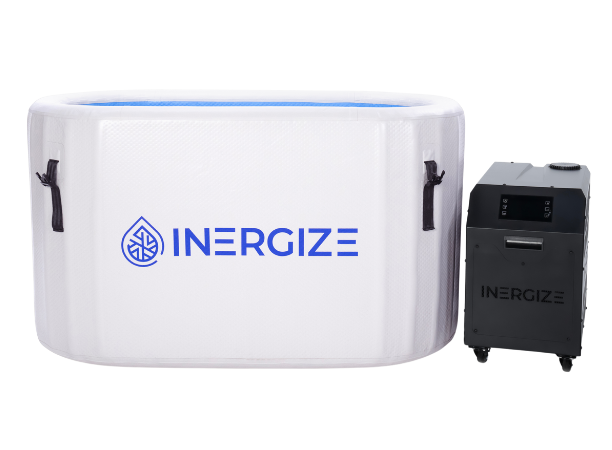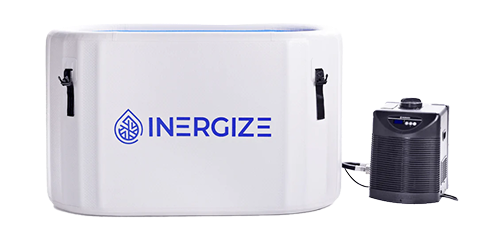Is Cold Plunge Good for Arthritis

Arthritis, a condition characterized by inflammation and stiffness of the joints, affects millions worldwide. It can significantly impact daily life, making even simple movements painful. As people search for effective ways to manage arthritis symptoms, cold plunging—or cold water immersion—has emerged as a potential therapy. But does it truly offer relief for arthritis sufferers? This article explores the science behind cold therapy and its potential benefits and risks for those living with arthritis.
Understanding Arthritis
What Is Arthritis?
Arthritis encompasses over 100 different conditions that affect the joints and surrounding tissues. The most common types are:
- Osteoarthritis (OA): Often called "wear and tear" arthritis, OA results from the breakdown of joint cartilage due to aging or injury.
- Rheumatoid Arthritis (RA): An autoimmune disorder where the immune system attacks the joint lining, causing inflammation and joint damage.
Symptoms and Challenges
Common symptoms of arthritis include joint pain, stiffness, swelling, and a decreased range of motion. These symptoms can vary in severity and may come and go. Arthritis can make everyday tasks challenging, affecting the quality of life and emotional well-being of those afflicted.
Current Treatment Options
Managing arthritis typically involves a combination of:
- Medications: Pain relievers, anti-inflammatory drugs, and specific medications for RA like disease-modifying antirheumatic drugs (DMARDs).
- Physical Therapy: Exercises to strengthen muscles around joints, improving flexibility and reducing pain.
- Lifestyle Changes: Weight management, a balanced diet, and low-impact exercises can alleviate stress on joints.
- Surgery: In severe cases, joint repair or replacement may be necessary.
The Science Behind Cold Therapy
How Does Cold Therapy Work?
Cold therapy, or cryotherapy, involves applying cold temperatures to the body for therapeutic purposes. It works by:
- Reducing Inflammation: Cold temperatures cause vasoconstriction, narrowing blood vessels and decreasing blood flow to affected areas. This reduction can lessen swelling and inflammation in joints.
- Numbing Pain: Cold can temporarily numb nerve endings, diminishing the sensation of pain.
- Decreasing Metabolic Rate: Slowing down cellular metabolism can reduce tissue damage and inflammation.
Types of Cold Therapy
Various methods of cold therapy include:
- Ice Packs and Cold Compresses: Applied directly to affected areas for localized relief.
- Cryotherapy Chambers: Whole-body exposure to extremely cold air for brief periods.
- Cold Plunges: Immersing the body in cold water, usually between 50°F to 59°F (10°C to 15°C), for short durations.
Cold Plunging and Arthritis
Potential Benefits
Decreased Joint Inflammation
Cold plunging may reduce joint inflammation by constricting blood vessels, which limits the flow of inflammatory substances to the joints. This can alleviate swelling and discomfort associated with arthritis.
Pain Relief
The numbing effect of cold water immersion can lessen pain signals sent to the brain. This temporary analgesic effect might provide immediate relief from arthritis pain, making movement easier.
Improved Mobility
By reducing pain and swelling, cold plunging can enhance joint flexibility and range of motion. Improved mobility can lead to better participation in daily activities and exercise, which are crucial for joint health.
Mechanisms of Action
- Vasoconstriction: Cold temperatures narrow blood vessels, reducing inflammation and swelling in affected joints.
- Endorphin Release: Cold exposure can trigger the release of endorphins, the body's natural painkillers, improving mood and pain tolerance.
Expert Opinions and Research Studies
Medical Perspectives
Dr. Elizabeth Carter, a rheumatologist at the National Arthritis Center, explains:
"Cold therapy can be beneficial for managing acute arthritis flare-ups. It helps reduce inflammation and numbs pain, but it's important to use it appropriately and consult with a healthcare provider before starting any new treatment."
The Arthritis Foundation also recognizes the potential benefits of cold therapy, recommending it as a complementary approach to traditional treatments for reducing pain and swelling.
Scientific Studies
Study 1: Cold Application for Rheumatoid Arthritis
Published in Physiotherapy Canada, this study examined the effects of cold applications on RA patients.
- Findings: Participants experienced reduced joint swelling and pain, leading to improved physical function.
- Reference: Physiotherapy Canada
Study 2: Effectiveness of Cryotherapy in Osteoarthritis
This research from the Journal of Clinical Nursing explored cryotherapy's impact on knee osteoarthritis.
- Findings: Cryotherapy significantly reduced pain levels and enhanced the quality of life for participants.
- Reference: Journal of Clinical Nursing
Factors to Consider Before Trying Cold Plunging
Individual Health Status
Before starting cold plunging, assess your overall health:
- Severity of Arthritis: Those with advanced arthritis or significant joint damage should exercise caution.
- Other Medical Conditions: Conditions like Raynaud's phenomenon, cardiovascular issues, or hypersensitivity to cold may make cold plunging unsuitable.
Consultation with Healthcare Provider
It's crucial to discuss cold plunging with your doctor or rheumatologist. They can provide personalized advice and ensure that this therapy complements your existing treatment plan without causing adverse effects.
Frequency and Duration
Start slowly to gauge your body's response:
- Duration: Begin with sessions lasting 1-3 minutes.
- Frequency: Try cold plunging 2-3 times per week, adjusting based on how you feel.
Potential Risks and Precautions
Possible Adverse Effects
While cold plunging can offer benefits, it may also pose risks:
- Increased Stiffness: Prolonged cold exposure might lead to muscle stiffness, potentially worsening arthritis symptoms.
- Cardiovascular Strain: Sudden immersion in cold water can affect heart rate and blood pressure, posing risks for those with heart conditions.
Safety Measures
To minimize risks:
- Gradual Acclimation: Ease into colder temperatures over several sessions.
- Monitor Your Response: Pay attention to how your body reacts during and after plunging. Discontinue if you experience discomfort or adverse symptoms.
- Limit Exposure: Avoid staying in cold water for extended periods.
Alternative Therapies
Heat Therapy
Heat therapy can relax muscles and increase blood flow, reducing joint stiffness. Methods include warm baths, heating pads, and therapeutic warm wraps.
Contrast Therapy
Alternating between hot and cold treatments may stimulate circulation and reduce inflammation more effectively than using one method alone.
Exercise and Physical Activity
Engaging in low-impact exercises like swimming, tai chi, or yoga can strengthen muscles around joints, improving stability and reducing pain.
Conclusion
Cold plunging presents a promising option for those seeking additional ways to manage arthritis symptoms. By potentially reducing inflammation and providing pain relief, it can complement traditional treatments. However, it's essential to consider individual health factors and consult with a healthcare provider before incorporating cold plunging into your regimen.
Final Thoughts
Arthritis affects individuals differently, and what works for one person may not work for another. An individualized approach, guided by professional medical advice, ensures that you choose therapies best suited to your condition and overall health.
Encourage Informed Decision-Making
Before starting cold plunging:
- Consult Your Doctor: Get personalized advice based on your medical history.
- Start Slowly: Monitor how you feel and adjust accordingly.
- Combine Therapies: Consider integrating cold plunging with other treatments for a holistic approach.
Discover Therapeutic Cold Plunge Solutions with Inergize Health
At Inergize Health, we offer cold plunge tubs designed for comfort and safety, making them suitable for therapeutic use in managing arthritis symptoms.
- Explore Our Products: Visit our Cold Plunge Collection to find the right tub for you.
- Learn More: Access resources on cold therapy and arthritis management on our Blog.
- Get Personalized Assistance: Reach out through our Contact Page for expert guidance.
Empower your journey towards better joint health with Inergize Health!






